Abstract 6/2014
Table of content
Piotr Olszewski, Halina Krukowska, Piotr Krukowski – Assessment methodology for public transport interchanges
Sławomir Książek – Spatial implications of bus transport deregulation on the example of the Świdnica poviat
Aleksandra Ciastoń-Ciulkin, Wiesław Starowicz – Influence of financial instruments referring to paid parking zone to the sustainaible mobility of employees of the Municipality of Cracow
Ilona Bartel, Urszula Duda, Bartłomiej Wiertel – Functional analysis and assessment of park and ride system in Cracow
Radosław Bul, Tomasz Resiński – Impact of EU funding on organization and development of regional railways in the central part of Wielkopolska voivodeship in the years 2006-2014
Abstracts
Piotr Olszewski, Halina Krukowska, Piotr Krukowski
Assessment methodology for public transport interchanges
Abstract: Passenger-friendly public transport interchanges are key elements of modern transport systems. Yet there are no methods for assessing the quality of such interchanges. The paper presents development and application of the proposed Assessment Methodology for Public Transport Interchanges (AMPTI). The method is based on 14 quantitative indicators and can be used to evaluate both existing and proposed interchanges. The indicators cover such characteristics as: spatial integration, ease of orientation, quality of infrastructure, accessibility for the disabled, personal security, traffic safety, passenger information and additional facilities. When using AMPTI, the basic tool of data collection is interchange audit which involves surveying such elements as platforms, footpaths, pedestrian crossings and stairs. In addition, passenger surveys should be conducted to determine passenger volumes, transfer matrix and user opinions. Survey and assessment of 10 public transport interchanges conducted in Warsaw have shown several shortcomings: poor spatial integration, low quality of platform infrastructure, lack of accessibility and poor passenger information. Application of the methodology allows to point out those interchange elements which should be improved first in order to increase accessibility and attractiveness of the public transport system.
Key words: public transport, transport interchanges, assessment method
Sławomir Książek
Spatial implications of bus transport deregulation on the example of the Świdnica poviat
Abstract: This paper deals with issues related to the deregulation of bus transport in Poland and its spatial implications. The article endeavors to answer the question about spatial consequences for bus transport functioning resulting from transformation of the bus transport market in the city and poviat of Świdnica (Lower Silesian Voivodeship). The author focuses on changes in the directions and intensity of bus connections in the two periods: 1988 and 2014. Also the most significant factors affecting those changes have been discussed. Analyses of transformations on the bus market and their consequences (f.i. competition between the carriers and market participation) occurred during indicated 26 years constitutes another important issue of the paper. This paper also discusses changes in the accessibility of bus transportation for settlement units in the poviat of Świdnica. Having conducted a relevant analysis, certain spatial dependences in transformation of bus transport in the area have been observed. In the analyzed period of time the role of the local PKS and MPK companies decreased significantly, connections in the suburban areas were closed or considerably limited, competing, independent companies have achieved growth of transport services on the most profitable transportation lines. Those phenomena have been observed in different Polish cities, but some of them were of local nature and gave the characteristics of specificity of the transport market in the Świdnica poviat.
Keywords: bus operator’s market, bus transport deregulation, transport accessibility
Aleksandra Ciastoń-Ciulkin, Wiesław Starowicz
Influence of financial instruments referring to paid parking zone to the sustainaible mobility of employees of the Municipality of Cracow
Abstract: Constant growth of private sector participation in urban transport forces local authorities to undertake activities aimed at sustainable mobility. To make those activities more effective different tools are implemented, and among them financial instruments are of significant importance. The article presents characteristics of the most frequently applied instruments and examples of its application in Cracow. Besides, results of survey among Municipality of Cracow’ employees concerning enlargement of paid parking zone. The survey were aimed at the research on influence of applied financial instruments on change of transport behavior among private cars users. The survey confirms that application of this instrument shapes sustainable mobility in the city. First of all, approximately 33 % of respondents have changed their transport behavior moving from cars into public transport, car sharing and intermodal transport. Besides, among respondents who have not changed their transport behavior frequency of rides by private cars has been reduced in the paid parking areas: 33 % don’t enter the zone and 16 % of drivers travel less frequently the before determination of the zone.
Key words: urban transport, mobility, transport behavior, financial instruments
Ilona Bartel, Urszula Duda, Bartłomiej Wiertel
Functional analysis and assessment of park and ride system in Cracow
Abstract: The article discusses the most important issues about Park and Ride system in Cracow which is being still improved. It concludes with the statement that although drivers use Park and Ride parking lots, the system is not as popular and accepted as it should be, especially in Cracow’s citizens mind. Functioning of the system, aimed at encouraging drivers to leave their cars and use public transport, have been researched. On the base of results of this researches authors analyzed and described the scope and purpose of this use at the P+R parking lots. Also permanent addresses of drivers parking at the P+R parking lots have been determined and analyzed. In the article the most important problems connected to Park and Ride system are described. As a good example for Cracow it is presented successful operation of the P+R system in the city of Edinburgh based only on the public bus network. Edinburgh is connected with the city of Cracow by the agreement of partner cooperation . Operation of the Edinburgh Park and Ride system can be an example of good practice to use in Cracow in the scope of organization and management of this type of parking system. It also includes marketing and promotion of the system – necessary for its effective functioning.
Key words: system Park and Ride, P+R, interchange nodes, travel behaviors
Radosław Bul, Tomasz Resiński
Impact of EU funding on organization and development of regional railways in the central part of Wielkopolska voivodeship in the years 2006-2014
Abstract: Poland’s accession to the European Union contributed with many rail investments in our country. The EU funds have been spent on modernization of tracks, railway stations and purchase of rolling stocks. The EU funds have supported long-haul rail transport and regional transport as well. The aim of this article is to recapitulate investments on the regional railways which have been co-financed within the EU funds from 2007-2013 programming period. The Authors also tried to determine the impact of these investments on organization and developement of regional railways in the central part of Wielkopolska voivodeship. Research on accessibility and number of connections in 2006 and 2014 shows, that investments had a positive impact on functioning of regional railways. The article relates also to the plans and possibilities of the future investments in regional railways which can be implemented thanks to the EU funds 2014 – 2020.
Key words: regional passenger railways, Wielkopolska voivodeship, impact of EU funds

 SITK
SITK 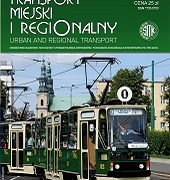
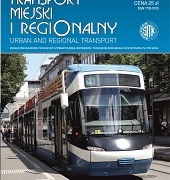
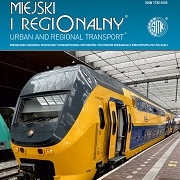 SITK RP
SITK RP 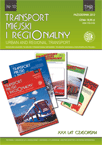 SITK RP
SITK RP 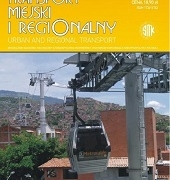 SITK RP
SITK RP 
 SITK RP
SITK RP SITK RP
SITK RP